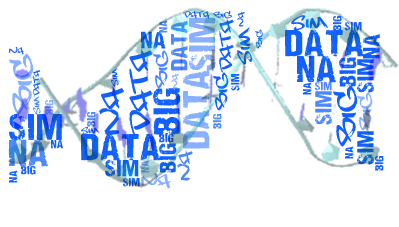BIGNASim database structure and analysis portal for nucleic acids simulation data
----
DNA & RNA Structure and Helical Parameters Analyses (NAFlex)
----Tutorial 2 -- Global analysis (XCGY)
Tutorial 3 -- Meta-trajectory (XCGY)
Tutorial 4 -- Experimental vs MD analysis
----Simulation
For each particular simulation, BIGNASim integrates all the information extracted from the simulation and the set of pre-computed analyses in a new screen: Simulation description.
The Simulation description screen contains four different sections that can be expanded/shrinked (see figure below):

Nucleic Acid information
Nucleic Acid information section shows the nucleotidic sequence of the nucleic acid, together with the type (DNA, RNA, Complex, etc.), subtype (A, B, Z, etc.), and number of chains (single, duplex, triplex, etc.). Associated pdb and ligands are given if they exist, with links to a PDB portal and Nucleic Acids Database (NDB) with information about the structure. 3D and 2D representations are also shown when available.

MD Simulation information
MD Simulation information section shows the metadata associated with the simulation run. The most important data is directly shown in a table, whereas the complete set of metadata (stored in UMM format, see Scalalife white paper) can be seen clicking at see full UMM.
MD metadata information goes from the forcefield used, length of the simulation, simulation parameters such as time step, temperature or water model used, ionic concentration and ions type. Validation analyses such as RMSd, RMSf and Solvent Accessible Surface Area are also shown in 2D plots, as a simulation Quality Control.

Attached to the metadata table, a short video representing the simulation is shown. For a further analysis of the trajectory, an interactive JSMol window is also available, representing the trajectory with 500 equally-distributed snapshots, that can be rotated, zoomed and superposed.

Trajectory Analyses
Trajectory Analyses section shows the set of pre-computed, nucleic-acid specific analyses made to the whole set of trajectories stored in the database. The set of analyses are based on our NAFlex platform, and are the following:
- Curves Analysis
- Stiffness Analysis
- Principal Components Analysis
- NMR observables Analysis (J-Couplings and NOEs)
- Hydrogen Bonds Analysis
- Stacking Analysis
- Distance Contacts Analysis
- Experimental vs MD Analysis (*)
(*) Only computed for those sequences having more than 5 representants in the PDB database (see Experimental Trajectories Analyses section).
For a complete description of all the analyses, please refer to NAFlex help pages or NAFlex paper.
The number of analyses for the trajectories vary dynamically, as some of the analyses can not be computed on all of the structures.
NAFlex interface is used to show all the analyses information in an interactive way. Results can be explored for a particular base/base-pair/base-pair step either averaged by time or for all the snapshots of the trajectory.

Trajectory Selection
Trajectory Selection section allows the possibility to extract a particular slice and/or atom selection of the trajectory (e.g. obtain a trajectory file containing only the central fragment of the structure).
Those trajectories can be downloaded but also can be re-inserted in the NAFlex engine for obtaining specific analysis.




